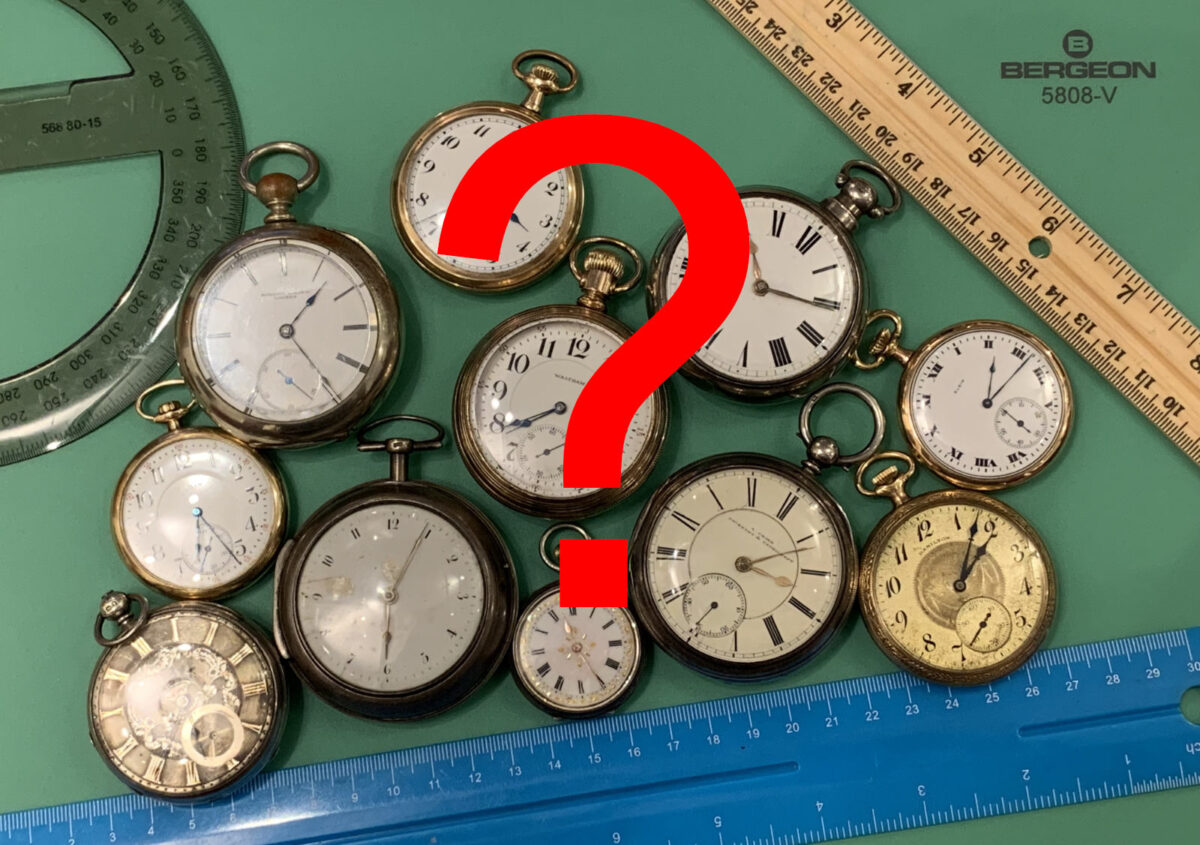Pocket watches are often described as 18-size, 16-size, or something like that. What does that mean exactly? Like any good imperial unit, it’s complicated.
Note: One important thing to remember is that watch size is based on the size of the movement, not the watch case. This can be deceiving, as watch cases vary a lot.
Most American watches are sized on the Lancashire scale. The Lancashire scale is based on a 0-sized watch being 1″, but to account for the “fall” – the the extra amount added to the bottom plate of the watch to keep the watch from falling out of the case – you need to add 5/30″, so a 0-sized watch on the Lancashire scale would be 1 5/30″, or 1.667″. Each step larger than this adds 1/30″, therefore a 12-size watch = 1″ + 5/30″ + 12/30″, or 1.567″ and an 18-size watch = 1″ + 5/30″ + 18/30″, or 1.767′.
The other common scale is the Swiss Ligne scale, with “Ligne” being pronounced “line”. This scale is much more reasonable – one “Ligne” = 2.256mm or 0.089″. There are 12 Ligne per French inch.
Check out the table below for an exhaustive comparison. Happy measuring!
